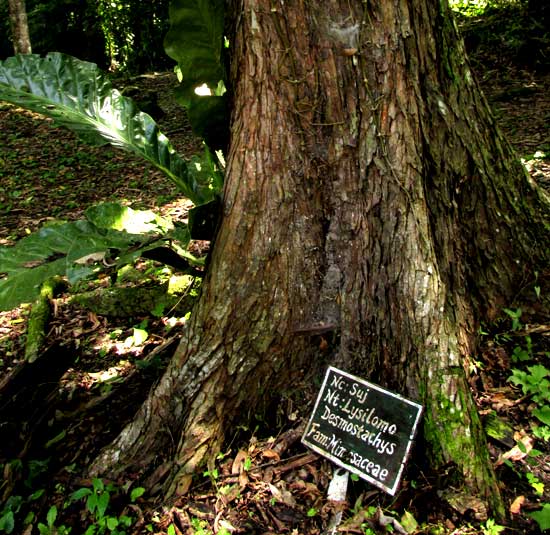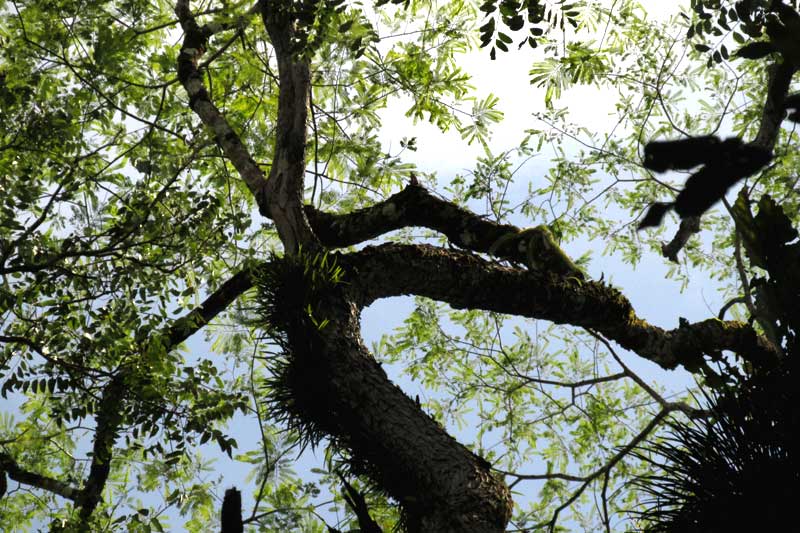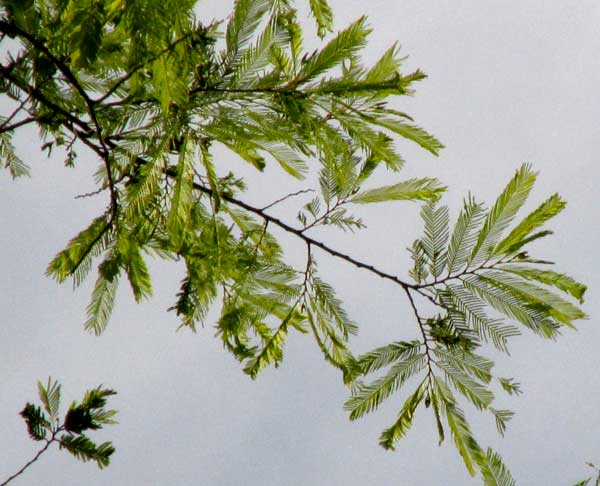Excerpts from Jim Conrad's
Naturalist Newsletter
from the November 16, 2018 Newsletter with notes from a camping trip into the Petén District of northern GUATEMALA
TEPEGUAJE/ SUJ TREE
Last September 31, during my camping trip into northern Guatemala's Petén district, in the campground of Rosario National Park on the east side of the town of Sayaxché, a fair-sized forest tree was labeled with a name that surprised me. Below, you can see the tree's sizable trunk with its sign beside it:

The sign gives the local name as Suj, its binomial as Lysiloma desmostachys, and the species is assigned to the Mimosa Family. The botanical names are out of date. Nowadays most experts regard the Mimosa Family as a subfamily of the massive Bean Family, and Lysiloma desmostachys has been recognized as a synonym of LYSILOMA ACAPULCENSIS.
It was the genus name Lysiloma that interested me most, for in arid northern Yucatan we have a very common Lysiloma tree species, Lysiloma latisiliquum, sometimes called the False Tamarind. Its page is at www.backyardnature.net/yucatan/tsalam.htm
But the Yucatan tree never gets as large as our campground Lysiloma acapulcensis, which grows up to 40ft (12m), I read. Below, you can see the view into the tree above the trunk, its heavy branches snaking toward light high in the forest canopy:

The tree was neither flowering nor fruiting, but the telephoto lens picked out its ferny leaves, which are very typical of the Mimosa Subfamily and very similar to the Yucatan's False Tamarind, shown below:

The campground Lysiloma acapulcensis bears no good English name, and really no well established Spanish name is recognized for it, though in Mexico Tepehuaje appears on several web pages.
Distributed from central lowland Mexico into much of Central America, Lysiloma acapulcensis is used for lumber and firewood, and its bark contains such a high level of tannin that its used for tanning leather. Tannin is astringent, causing tissue to pucker and tighten up, which helps with diarrhea, and to tighten up teeth loose in their sockets. A codex from the 1500s reports that it was used for the cough, fevers, and to purge the bowels. Eating the tree's seeds from two or three pods while fasting for two or three days has been used as a treatment for the amoebas. The trees' leaves and pods serve as livestock feed.